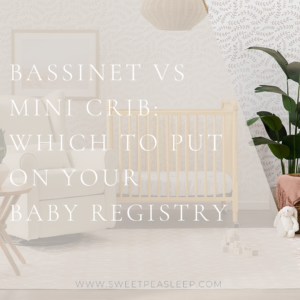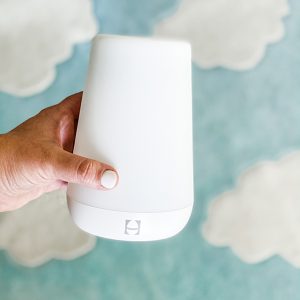In December 2021, after nearly two years of dodging the dreaded virus, my family finally came down with Covid immediately after Christmas. My second son, Nash, was hit the hardest of all and needed antibiotics and breathing treatments to get over the virus. We now know why he struggled to get well, and that is because only a little over two weeks later, he was diagnosed with leukemia.
When Nash needed to take antibiotics for the first time when we had Covid, I sheepishly asked the doctor for “extra doses”- just from administering Tylenol and Benadryl in the past for fevers and a rash, I knew that he would put up a major fight, likely spit some out, and potentially throw it up. This is not my first rodeo with a kid who won’t take medicine either. Both of my boys have really struggled to take oral medications, and I don’t think we are alone! Oral medication can be yucky, and most kids fight it to some degree. Giving meds to my kids used to give me SO much anxiety. I scoured the internet for tips on giving medication to children and truly found nothing helpful at that time.
When Nash was diagnosed with leukemia, oral meds were no longer optional. Practically, they couldn’t take a long time and we didn’t even have flexibility with the windows they were taken in. And as a matter of fact, when it comes to giving him his oral doses of chemo and steroids, it is absolutely critical to saving his life. Sometimes, during our first in-patient stay, we had to give oral medications over a dozen times a day. Between figuring things out on my own and getting tips from our amazing nurses, I surprised myself by quickly becoming a master medication administrator- something I never could have imagined given how nervous and bad I was at it before. I want to pass along these tips to other mamas. Although I hope you never have to give something as critical as chemo to your child, we all know the importance of antibiotics during an infection and many other medications or supplements for other conditions or illnesses. There are times when you simply cannot avoid it, and have to get a medication or supplement into your child. And when that happens, it can be a major battle that lasts hours.
I think it is silly that we can take recreational trips to the moon, but pharmaceutical companies still haven’t figured out effective ways to mask the taste of childrens’ medications to the point that they won’t vomit. However, until that day arrives I hope the tips in this post help you to make medication-giving a little easier on you and your kiddo.
Disclaimer: This is not medical advice on types of medication, dosages, or anything else out of my wheelhouse! This is simply mom-to-mom advice on successful ways to administer medications or supplements that you have been prescribed for littles who know how to put up a good fight.
Top Tips for Giving Oral Medication to Kids
Decrease Volume if Possible
Something I’ve learned is that lots of oral meds come in both liquid and pill form. Often, a liquid medication is a very high volume compared to the alternative. There is a medication my son has to take that is 5mls of liquid, but when I requested it in pill form, it was only half of a small tab. This made it much easier to crush and mix so I only had less than 2mls to give to my son. It is always easier to give less volume! If you’d like to give your child medication as a crushed pill, ask your doctor if it is available in that form rather than liquid.
In order to be able to cut and crush pills effectively, you’ll need a couple small items. I think these are good staples to keep in the medicine cabinet anyway! We use this pill cutter to cut pills as needed, and this easy pill crusher to grind them into a fine powder. I have seen many pharmacies and grocery stores also carry these tools- usually on a little endcap or display that also has pill organizers and other products.
First, cut the pills to the specified dose. Never guess on this and try to figure it out- if your doctor has prescribed a medication, the dose should be on the bottle. If you are trying to convert the dose liquid-to-pill, ask the doctor or pharmacist!!
Then, crush the pill in the pill crusher. I usually screw it on and off several times to crush it nice and fine with no clumps. This gives it a better texture for your kiddo and also makes it easier to come through the syringe.
Mix yucky tasting medication with something that tastes good
Whether you are giving a liquid or a crushed pill, mixing the medication with something that masks the taste can really be a game changer in terms of your child’s willingness to take the medication. It also decreases the chance of gagging and vomiting. Here are the best ideas I have found or tried for mixers-
- My number one favorite mixer for medication has become hot chocolate powder with coffee creamer. Hot chocolate powder- especially the kind in K-cups like these- has a very concentrated flavor, which means a little goes a long way. Coffee creamer is thick and sweet. It helps to mask the taste and also any gritty texture from crushed pills.
- Chocolate or cherry syrup. The nurses in the hospital recommended mixing medication with chocolate or cherry syrup. They are both thick, sweet, and easy to mix.
- Maple syrup and jelly or jam are both thick and sweet- see where I am going with all of these? Anything that masks taste and texture is a good candidate. You can even put a dissolving tab on a spoon with maple syrup, jam, or chocolate syrup to make administration easier and tastier.
- Orange juice. If you have a liquid medication that already is an attempted fruity flavor, 1-2mls of orange juice can help further mask any bitter taste that the medication may have.
- Mio water flavoring drops. Ultra-concentrated flavor meant to flavor a whole glass of water with just a few drops, so it will mask a yucky taste very easily!
- Applesauce or pudding. Mixing a pill or a small amount of crushed medication in a bite of applesauce or pudding can also be very helpful to mask taste and texture.
- Hershey’s Magic Shell ice cream topper. You can coat a pill with Magic Shell and pop it in the freezer to harden.
Easiest way to mix medication in a syringe:
- If you are using crushed pills, cut and crush your pills.
- Use a syringe that has a cap (like these). Take the plunger (the part you push to squeeze the medication out) and pull it out. So the outside of the syringe with the cap is all that is there.
- Put at least a small amount of liquid in first- either meds or mixer. Do not put dry crushed pills in first or it will clog the tip of the syringe.
- Put crushed pills in.
- Put any additional medication or mixer in.
- Push the plunger back in part way- it will stop because there will be air in the syringe. Shake the syringe until components are mixed.
- Holding the plunger in, turn the syringe so that the cap is facing the ceiling. Take the cap off, then very slowly and carefully push the plunger upward until the medication is at the tip of the syringe, ready to come out.
- Put the cap on again, then pull the plunger back and release several times. It will “pop” and mix the meds up a little bit better
- Take the cap off and you are ready to administer the meds!
Offer age-appropriate control
Especially in a scenario where you will need to give medication on a longer-term basis rather than just a 5 day course or something short-term, allowing your child to choose the timing and pace of the medication- or even allowing them to administer it themself- could be helpful. First fill the syringe up with something neutral like water, or something that tastes good. Show them how to push the plunger up while holding it in their mouth, and practice several times. Then, put the medication in and allow them to administer it themselves. You can also just use a medicine cup and let them sip out of it. Remind them to go slowly, and not to spit it out. This may result in medication lost, so only do this if you have easy access to additional doses, or if you trust that your child will not purposely squirt it out somewhere other than their mouth, or spit it out.
If you are the one administering the medication, you can still offer your child an appropriate amount of control. Ask them if they want you to go fast or slow? Where would they like to sit or lay down? What drink do they want afterwards?
9 times out of 10, you’re not going to convince a kid that medication is fun and delicious. That’s okay. You can affirm that you know it’s yucky but that you put it in chocolate or xyz to make it taste better. Affirm that it’s okay to not want to take it, but that it will make them feel better and that they do have to take it.
Also, filing under the mental considerations with medication, do not use medication as a threat! We want them to hopefully eventually feel neutrally or in some ways positively about medication, as something that they have to take when needed to help their body feel better or get better, and not as a punishment.
Administering oral medication to your child
Often during procedures and shots, it can be helpful and more comforting to hold children in a kind of comfort hold. This usually looks like holding a child on your lap with arms around them. Unfortunately with oral medication, I just haven’t found a good way to give it to an unwilling child that didn’t involve them needing to lay down on their back. It’s just too easy to spit out or just let it fall out of their mouth if they are sitting upright. What I have found most effective is this: laying them on the floor, and then laying next to them partially on your side/stomach with your upper body lightly across their their upper body holding them still. This gives you a relatively still child who cannot kick you with their legs, and you still have two hands free. One hand to administer the medication, and one hand to hold their head and keep it from turning. Is this fun? Absolutely not. But I’ve found that sometimes it’s necessary to make medication happen.
Give the medication slowly and wait for them to swallow
I always ask my son if he wants me to give it fast or slow. He usually says slow. I will insert the syringe in the side of his mouth. Even if his teeth are closed, I can get the medication to the back of his throat if I put the syringe to the side of his mouth on the inside of his cheek, about midway in. Then I will give him a very, very small squirt of medication. I find that giving it slowly is tedious, but helps him not to gag when he has to swallow. Sometimes he is even very relaxed by the time I get through about half of the medication, knowing I’m not going to just fill his mouth up suddenly and instead give it in manageable small amounts. Giving medication in small amounts also limits their ability to spit it out.
If your child is holding the medication in their mouth and refusing to swallow, you can do a few things- offer their chaser drink in a straw while they are still laying down, lightly blow in their face, patiently wait it out, or- last resort- pinch their nose for a moment so that they have to swallow. This can also make them cough or gag so I hate doing it, but we have had to on occasion.
If your child is 3 or older, you can teach them to swallow pills
Yep, it’s true! I didn’t know this was a thing either until I heard about it and spoke with our hospital’s child life specialist who confirmed. Children are capable of learning to swallow pills around or after age 3. It just takes practice! And the best news is that you can make practice fun, and practice with candy! You can start by practicing swallowing a small sprinkle. Then graduate to nerds, mini M&Ms, Tic Tacs, regular M&Ms, then jelly beans! Show your child how to place the candy on
your tongue and then swallow it with a sip of water. Make it a challenge- “Can you eat this without biting it??” This may take several days or weeks to learn, and so it might only feel worth it to work on this skill if you know your child will need to take medication on a more regular basis or if they absolutely cannot take liquid medication.
Fruit RollUps are very thin and sweet- you can wrap a small piece of a Fruit RollUp around a pill to eliminate the taste factor when swallowing a pill. This also makes the pill more slippery.
You can also use a little gadget like this water bottle attachment that will allow you to easily just take a big swig of water along with the pill.
Administering shots
Shots in our house absolutely need two caregivers. One to hold, and one to administer. You can use comfort holds while giving a shot.
Here are ways to decrease the pain of a shot:
Numbing cream and Press N Seal
If you have to give regular shots, chances are you can ask your doctor for some numbing cream. Numbing cream typically takes about 30 minutes to take effect, so the best trick I’ve learned is to put the numbing cream on the area, and then cover it with a small piece of Glad Press N Seal wrap (sticky side down).
Buzzy Bee
The Buzzy Bee is a device that combines an ice pack with vibration to minimize sharp pain. The device claims to lessen pain by 50-80%.
Shot Block
The Shotblocker is a small textured device that claims to “saturate the sensory nerves, distracting the patient from the pain signals caused by the needle poke.
Administering breathing treatments
Ask your doctor!!! But mine told me that a breathing treatment can be given without the mask and without the mouthpiece. You can simply hold the cup of the nebulizer right under their mouth and remind them to take deep breaths, and they will receive what they need from the breathing treatment. This was a game changer for us, since previously we had been trying to use the mask with my kid crying and trying to rip it off his face the whole time.
Also, ask your doctor if there are other options. Some breathing treatments can be taken as a few puffs from an inhaler instead of a long treatment through the nebulizer.
Not all of these will work for every kid, but I hope this has given you some good ideas for how to make medication easier for your little one. Above all of the tips and tricks, try to keep a calm demeanor yourself. Kids take their cues from us. If they see us bothered and distressed at having to give them medication, they will feel more distressed as well. Try your best to stay calm and patient. Let them know everything is okay (and tell yourself too! 😉 )
Remember too- sometimes as loving parents we are concerned that these events- having to hold our kids down, give medication, shots at home or the doctor’s office, etc- can cause a rupture to secure attachment. This is simply not the case. These examples, along with other things that can feel unpleasant like getting used to a new caregiver, crying in the car, sleep training, or leaving at a new school or daycare, are all examples of positive or tolerable stress. With the help of a loving and supportive caregiver, these experiences add to a child’s resilience and do not cause toxic stress with long-term ill effects or insecure attachment.










